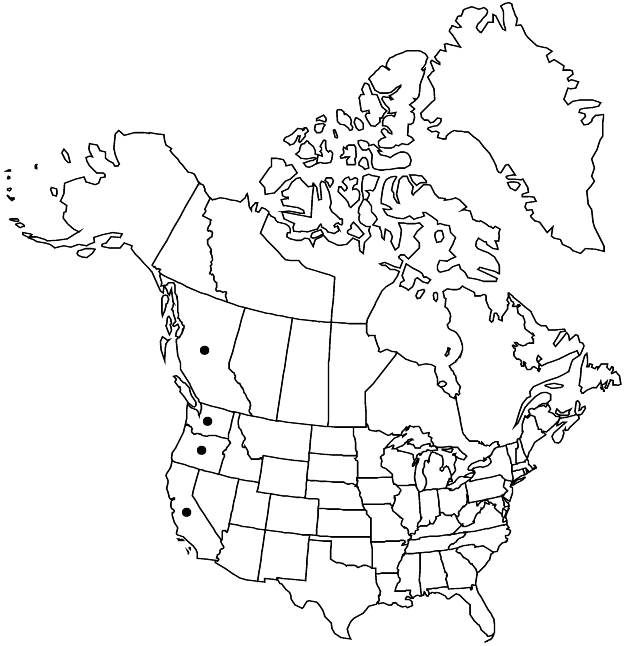Crassula tillaea
Fl. Jersey, 87. 1903 ,.
Plants terrestrial, annual. Stems erect, red in age, simple or often branching, 1–6 cm. Leaf-blades oblong, 1–3 mm, apex acute, apiculate. Inflorescences compact, crowded; flowers (1–) 2 per node. Pedicels 0.2–0.5 (–1.5) mm. Flowers 3 (–4) -merous; sepals lanceolate, 1–1.5 mm, apex attenuate, apiculate; petals narrow-lanceolate, 0.5–1 mm. Follicles ascending, (1–) 2-seeded, ovoid; old follicles ascending, boatshaped. Seeds ellipsoid, 0.3 × 0.2 mm, not papillate, dull, smooth to minutely rugulose. 2n = 64.
Phenology: Flowering spring.
Habitat: Hard-packed soil of paths and roadsides, sandy places
Elevation: 0-700 m
Distribution

Introduced; B.C., Calif., Oreg., Wash., s Europe, n Africa (Mediterranean region), also in s South America (Chile), also in s South America (Uruguay)
Discussion
First found in California in 1925 (J. T. Howell 1942), Crassula tillaea is now widespread and locally common, often mingling with C. connata. It has been spreading northward, being first found in Oregon in 1984 (D. H. Wagner 1991), in Washington in 1999 (A. L. Jacobson et al. 2001), and in British Columbia in 2002 (P. F. Zika 2002); it has not yet been found growing with C. connata in this part of its range (A. Ceska, pers. comm.).
Selected References
None.